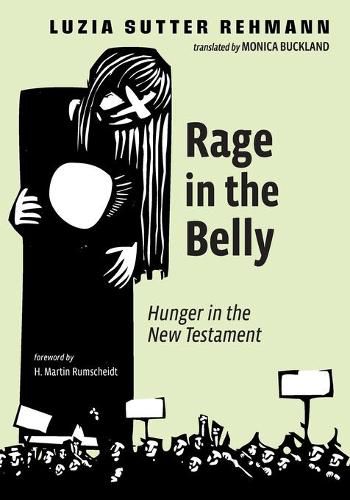Readings Newsletter
Become a Readings Member to make your shopping experience even easier.
Sign in or sign up for free!
You’re not far away from qualifying for FREE standard shipping within Australia
You’ve qualified for FREE standard shipping within Australia
The cart is loading…






This title is printed to order. This book may have been self-published. If so, we cannot guarantee the quality of the content. In the main most books will have gone through the editing process however some may not. We therefore suggest that you be aware of this before ordering this book. If in doubt check either the author or publisher’s details as we are unable to accept any returns unless they are faulty. Please contact us if you have any questions.
How is rage related to hunger? Hunger is a liminal experience, connected to powerlessness, shame, and violence. Hunger does not issue into speech. It cannot therefore be easily found in the biblical texts, written by (and about) people who knew hunger. It hides behind the words in these texts. Rage, conversely, finds expression; and in the texts, it can alert readers to hidden experiences of hunger. But rage is not just a response to the lack of food. It is also a transformative force, reaching towards a justice that is not yet real. The experience of hunger and the fear of famine often go hand in hand with anger–a rage that can bring whole populations to their feet. Luzia Sutter Rehmann develops a biblical hermeneutic that centers on the
fire
in the belly of the hungry, their rage that leads to protests and uprisings. Her reading shows
the poor
or
the many
as those with whom Jesus cooperates and as subjects acting on their own initiative. The book also highlights key socio-historical information on the food situation of ancient Rome and Palestine: on poverty, political dependence and unrest, droughts, and famines.
$9.00 standard shipping within Australia
FREE standard shipping within Australia for orders over $100.00
Express & International shipping calculated at checkout
This title is printed to order. This book may have been self-published. If so, we cannot guarantee the quality of the content. In the main most books will have gone through the editing process however some may not. We therefore suggest that you be aware of this before ordering this book. If in doubt check either the author or publisher’s details as we are unable to accept any returns unless they are faulty. Please contact us if you have any questions.
How is rage related to hunger? Hunger is a liminal experience, connected to powerlessness, shame, and violence. Hunger does not issue into speech. It cannot therefore be easily found in the biblical texts, written by (and about) people who knew hunger. It hides behind the words in these texts. Rage, conversely, finds expression; and in the texts, it can alert readers to hidden experiences of hunger. But rage is not just a response to the lack of food. It is also a transformative force, reaching towards a justice that is not yet real. The experience of hunger and the fear of famine often go hand in hand with anger–a rage that can bring whole populations to their feet. Luzia Sutter Rehmann develops a biblical hermeneutic that centers on the
fire
in the belly of the hungry, their rage that leads to protests and uprisings. Her reading shows
the poor
or
the many
as those with whom Jesus cooperates and as subjects acting on their own initiative. The book also highlights key socio-historical information on the food situation of ancient Rome and Palestine: on poverty, political dependence and unrest, droughts, and famines.